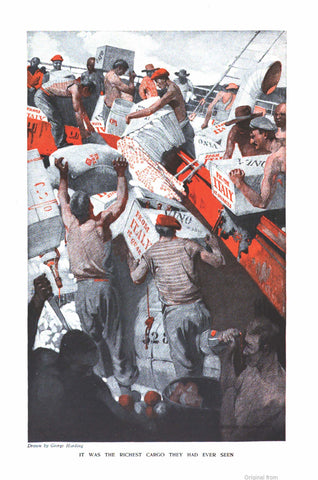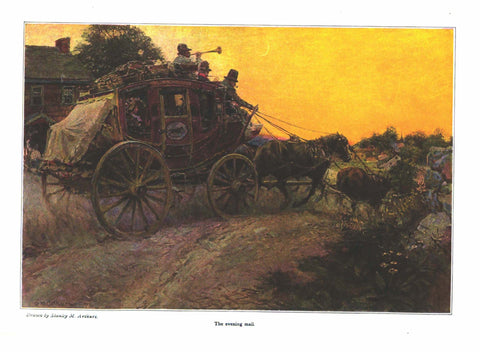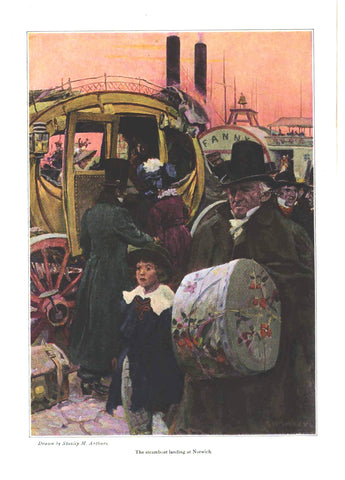Howard Pyle story illustration for "Harper's Monthly Magazine" May 1890 issue
$250.00
by John Austin Stevens
Harper’s Monthly. Vol. 80. May, 1890.
IMAGE INFORMATION
Image Size: H 7.5” x W 10.5”
Matted & Framed: H 13.50” x W 16.5”
Framed Price: $250.00
Whiteglove packaging and shipping
The "father of American illustration" created this scene as a binary (Black & White) oil on board. Photolithography was still a relatively new technology in 1890, but it appears the publisher used a version of it to reproduce Pyle's illustration in the May 1890 issue of its monthly magazine.
In this case, Harper & Brothers used a technique called “photography-on-the-block.” This picturesque name refers to a process in which a light is beamed through a photographic negative of the artist’s work. The features of the photographed image are projected onto an engraving block. The block that receives the projected image, wood or metal, has been treated with a light sensitive gel so the features of the projected image become fixed on the plate. The image transferred in this “photo-mechanical” process then becomes a template for an engraver who craves the template to duplicate the patterns in the photographed image.
By 1880, engravers had developed techniques which allowed them to duplicate the tonal values of the photographed images. A "tonal engraving” could look like the photographed image, but image quality was not consistent. Fixing these flaws required expensive touch-ups by engravers.
Frederick Ives presented an automated process that solved these quality problems in the mid-1880s. He placed lined screens between the photographic negative and the print surface. The screen changed the projected image from a continuous field of lighter and darker areas into collections of (black) dots. By converting an image into fields of more and less dense black dots, it became possible to produce images whose black-dot fields graded from black into white. This process became known as “halftone imaging”.
If you were to lay a transparency of Pyle’s 1890 illustration over the original picture, which is in the collection of the Illustrated Gallery of Fort Washington, Pennsylvania, you would find that the two images are identical. This shows that the image printed in the magazine was photographic reproduction of Pyle's original work. If you study detailed sections of the image in the magazine, you will see that the tonal qualities of the original piece have been duplicated by carving the "photograph on the block."
We know from this analysis that the illustration in the magazine is more than an interesting scene from an 18th century tavern in New York City. It is also a technological marvel that was produced with an image reproduction technique that was about to be replaced. Knowing this makes the illustration a little bit more interesting!








